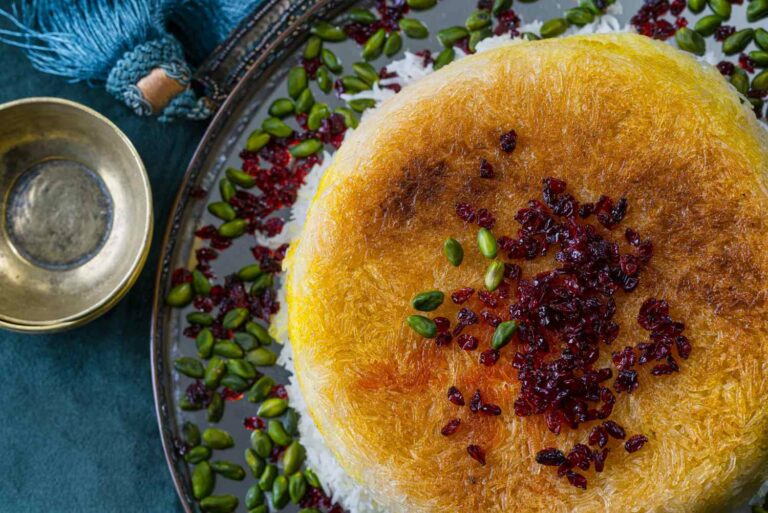Introduction: Iranian cuisine and its origins
Iranian cuisine is one of the oldest and richest in the world, reflecting a mix of cultural and historical influences. The ancient Persians were known for their culinary skills and their love of good food. Their cuisine is famous for its complex flavors, fragrant spices, and unique ingredients. Over the centuries, Iranian cuisine has evolved and adapted to the changing tastes and preferences of different generations. Today, Iranian cuisine is a rich tapestry of flavors, textures, and aromas, with a diverse range of dishes that reflect the country’s rich cultural heritage.
Central Asian influences on Iranian cuisine
Central Asia has had a profound influence on Iranian cuisine, particularly in the north and northeast regions of Iran. The area was part of the Persian Empire, which extended to Central Asia, and the two regions shared a common heritage and cultural identity. The Central Asian nomads brought with them a wealth of culinary expertise and ingredients that were adapted and incorporated into Iranian cuisine. For example, the nomadic tribes introduced the use of yogurt, sour cream, and kefir, which are now widely used in Iranian cooking. They also introduced the use of lamb, which is a staple in Central Asian cuisine.
The Silk Road and its impact on Iranian cuisine
The Silk Road was a major trade route that linked the East and West, passing through Iran and Central Asia. The trade route brought with it a variety of ingredients and spices, including cinnamon, ginger, and cloves, which were used in Iranian cuisine. The Silk Road also brought with it cultural and culinary influences, which were adapted and incorporated into Iranian cuisine. For example, the Chinese introduced the use of noodles, which were adapted and became a staple in Iranian cuisine.
Common Central Asian ingredients used in Iranian dishes
There are several common ingredients used in Iranian cuisine that have their roots in Central Asia. These include yogurt, sour cream, kefir, lamb, and beef. Other Central Asian ingredients used in Iranian dishes include rice, apricots, pomegranates, almonds, walnuts, and saffron. These ingredients are used to add flavor, texture, and color to Iranian dishes, and they give Iranian cuisine its unique and distinctive flavor.
Similarities between Central Asian and Iranian cuisine
Central Asian and Iranian cuisine share many similarities, particularly in the use of spices and herbs. Both cuisines use a variety of spices, such as cumin, coriander, and turmeric, to add flavor and aroma to dishes. Both cuisines also use fresh herbs, such as parsley, cilantro, and mint, to add freshness and color to dishes. Additionally, both cuisines use yogurt and sour cream as a base for sauces and dips.
Conclusion: A blend of unique flavors in Iranian cuisine
In conclusion, Central Asian influences can be found in Iranian cuisine, particularly in the north and northeast regions of Iran. These influences are a result of the close cultural and historical ties between Iran and Central Asia, as well as the trade and cultural exchanges that occurred along the Silk Road. Today, Iranian cuisine is a unique blend of flavors, textures, and aromas, reflecting the rich cultural heritage of the region. Its combination of Central Asian and Persian influences make it a culinary experience that is truly unique and unforgettable.

